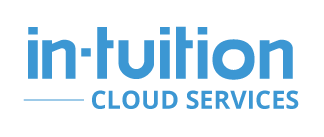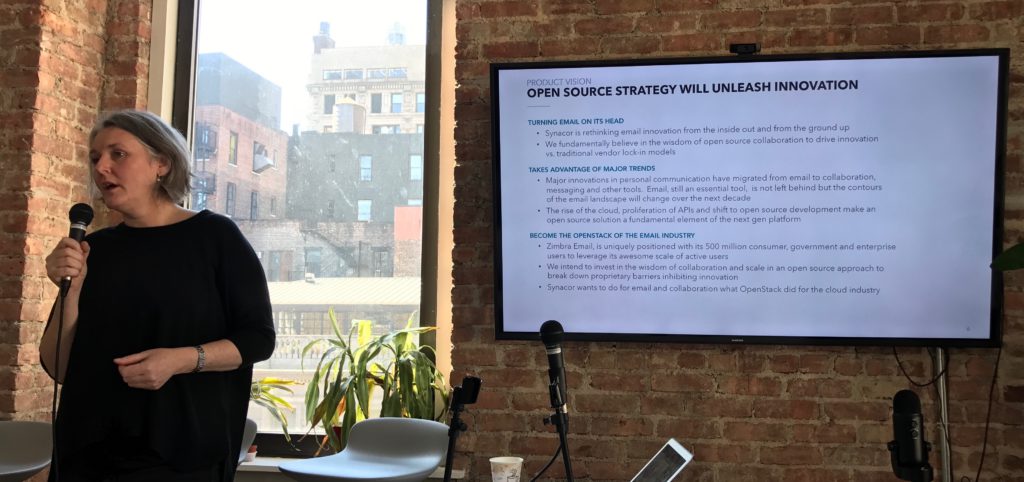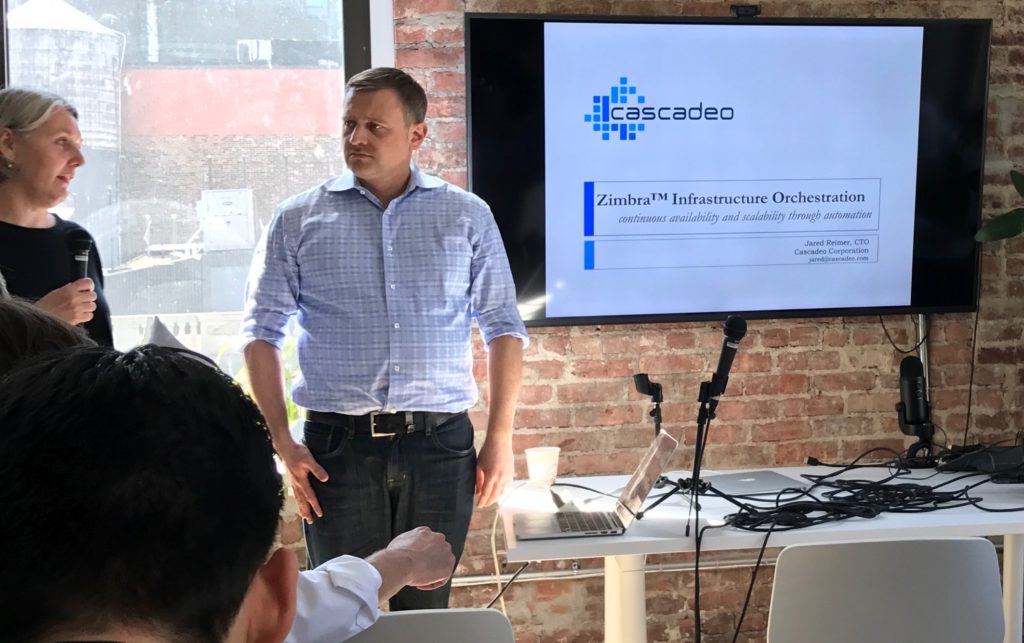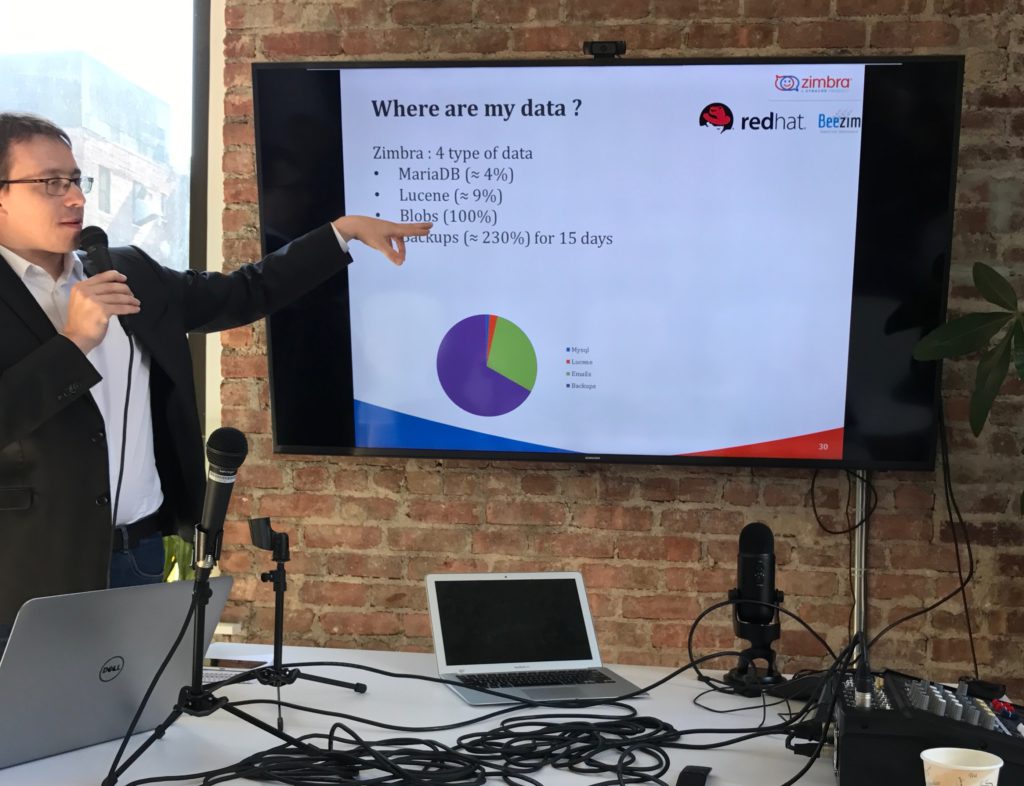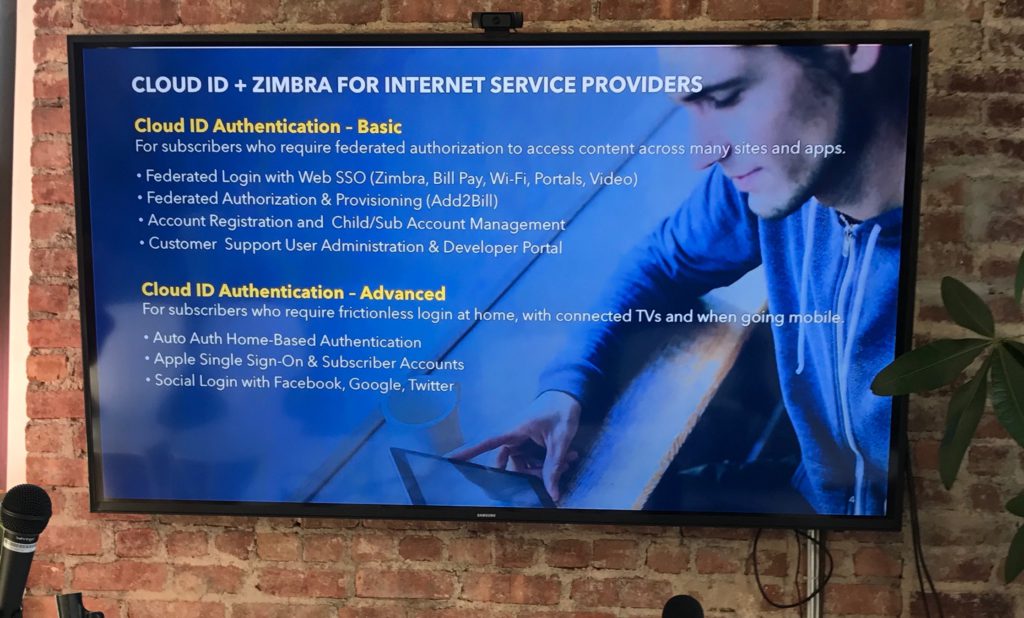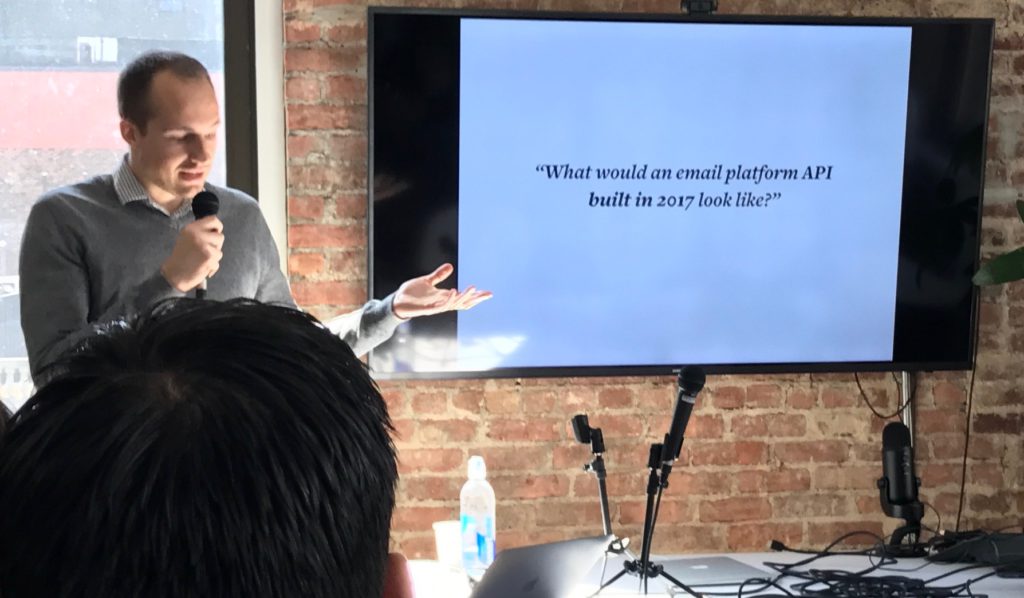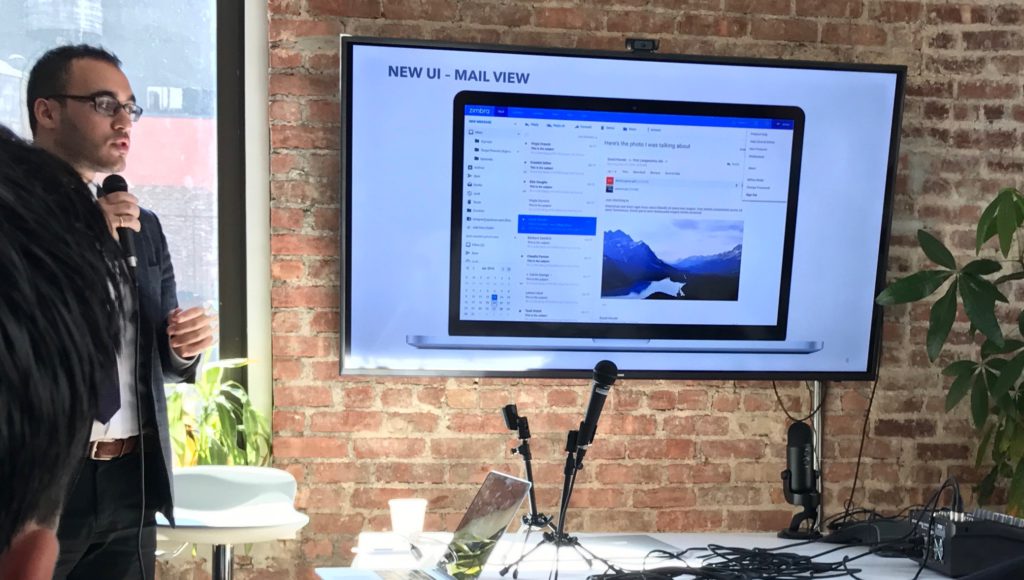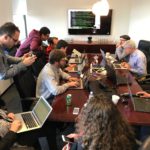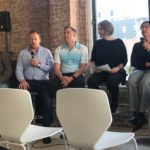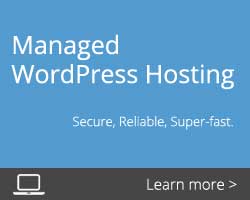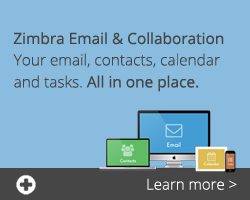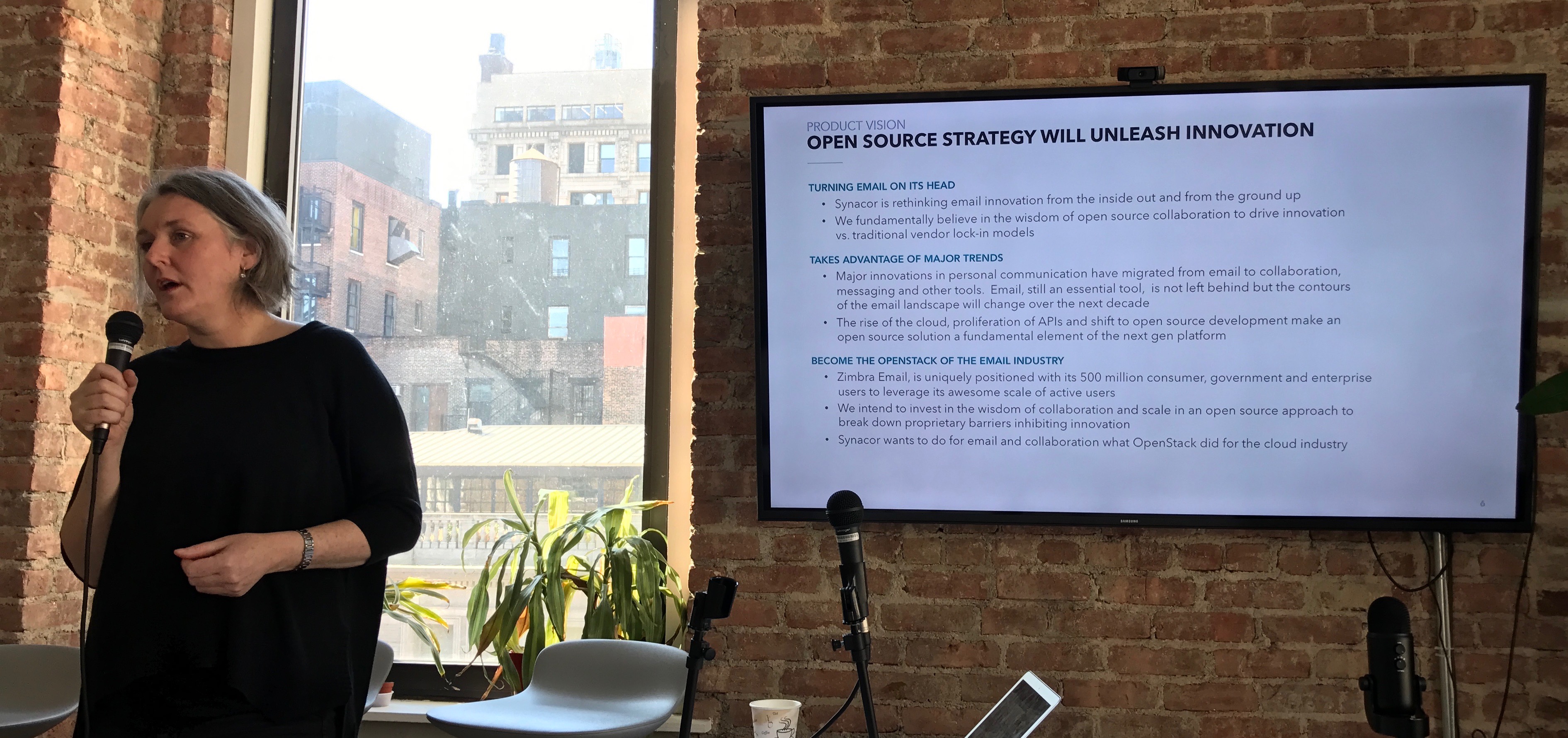
What happened at Zimbra Commit event in New York last week (March 2017)? More importantly, what does this mean for the future of Zimbra and the Zimbra Community?
I’ve tried to condense all which I picked up during 3 nights of social events and 2 intense days of presentations and ‘bug bashing’ at the New York offices of Synacor. There’s a lot to cover and some interesting things to explore so forgive me for the detail! I’ve attempted to look past the headlines and delve deeper into why I think the event marked a sea change for us as a community. If I’ve missed anything, please let me know!
Key takeaway – Zimbra’s future is bright. Really bright. It feels like we’re back to business where we left off post Yahoo…
In the [paraphrased] words of Erynn Peterson, VP of Zimbra Product who hosted the event “It’s like we took the healthiest, fittest most promising astronaut, killed them off and put them in the deep freeze. Then, years later thawed them out and they popped up fit and still ready for purpose.”
To stretch Erynn’s metaphor, I believe that astronaut is on the way to space and that Houston will provide good guidance… Here’s why I think that.
Energy
Right from the first few drinks the night before at the welcome party, there was some sense of excitement and possibility. The fact that Partners and Zimbra staff had come from India, Singapore, Brazil, Europe and across the USA helped add buzz – many of us getting the chance to put faces to names we’ve known for 10 years or more. Everyone at Zimbra has been working flat out for months behind the scenes to get to the point of being able to deliver on the announcements at the Commit NYC event. The team are passionately committed to the future of Zimbra and it shows. The fact that many of the team were there to experience the feedback and be a part of it contributed to the great energy.
All of these factors contributed to a very positive and enjoyable vibe. It was a lot of fun and didn’t feel much like work!
- Himesh, Brent and Erynn kick off the party
- Partners and Zimbra staff from across the world (more out of frame)
Renewed Open Source commitment
The Zimbra community has always been its great strength. From developers and contributors to customers and partners, there’s been a shared sense of how email and collaboration should be. The “right” way to do it.
Way back in 2005, Zimbra published a white paper titled “The top ten ways to fix email”. I can’t find an online version, but I have a local copy here. It makes for interesting reading, illustrating the good thinking which went into Zimbra’s early design and how far ahead of the game Zimbra were at that time. With the benefit of hindsight, the “top ten” were realised by Zimbra and competing vendors, thereby validating Zimbra’s analysis of what was wrong with email.
The 2005 white paper ended with a section titled “Charge” – a call to action. I think it’s still relevant today.
“Innovation is the key. To often our rhetoric in promoting open source alternatives is focused on reduced licensing costs, which is more a recipe for customers soliciting further discounts from the incumbents. Instead, we should leverage the strength of our open source communities (whether Zimbra or the alternatives) by innovating in order to make email/collaboration more efficient, to make email administration less painful, and to drive down total cost of ownership in enterprise messaging. As a community, we have many more bright ideas than any single company can muster, but only through innovation can open source achieve its potential.”
Here are some of the Open Source focused announcements / changes from Commit NYC
- Source code is now in Github – it’s a public repository anyone can look at.
- Huge refactoring effort to make it super easy to build Zimbra – checkout zm-build, run the build script. Drink coffee. Done!
- There’s a new contributor agreement https://gist.github.com/syncosource/721a9a0651f0e55d7cfc7059ceaf2b20
- Zimbra will accept pull requests. Signing of the contributor agreement is integrated into the pull request workflow – no more paper forms to sign!
- Install & Admin guides are in Github: https://github.com/Zimbra/installguides and https://github.com/Zimbra/adminguide
Making the above happen required a serious commitment from the dev and product management teams to get the code refactored. Of course, this helps Zimbra’s own developers, but it also opens things up to the community and diverting development resources away from work on features (revenue generating) is always hard to justify to shareholders!
Erynn gets open source – she has a track record. She gets how things need to work and if she doesn’t she’s proved willing to listen. More on listening later.
Consulting with the community
Everyone from Synacor was very open with us throughout the event. We pretty much took over the Synacor offices for the day on Thursday for a bug bash (thanks to all the staff there who were really welcoming and graciously put up with our many interruptions!) There was a lot of positive interaction between Synacor staff and ‘non staff’ – it felt like a community effort and we (the attendees) directly influenced key decisions – product naming/versioning being one which comes to mind.
Here’s how I observed Zimbra taking a consultative approach
- Michael Medellin, Zimbra Platform Architect, specifically asked for contributors – see his presentation below for details.
- Erynn gave a commitment to maintain Bugzilla, even though the team use Jira internally. This is admirable as it must be a headache to keep them in sync.
- Erynn also took on our feedback about pm.zimbra.com and whilst I can’t remember exactly what was agreed, I got the feeling that the dev and product teams now understand why it’s a key tool for the community, customers and partners.
- Erynn made a commitment to make more use of the forums for public discussions. There will be V Teams made up of Synacor employees, community members and partners to focus on key areas. E.g. BSP and API. I can’t remember the rest – if anyone has those notes, I’d be grateful for an update.
- Erynn explained that during November and December 2016, she contacted a number of key developers from the Zimbra community and asked them for their feedback to help inform decisions. AJ Cody, a founder of the Zeta Alliance, spent two hours on the phone with Erynn providing feedback some weeks before the Commit event – Erynn even missed a flight to stay on the call. From my own perspective, Erynn spent time understanding our feedback and requirements as a BSP across a couple of transatlantic phone calls.
A strong platform based approach to the product architecture and focus on core stability
Synacor are one of the largest users of ZCS with many millions of users hosted on a shared platform. They have ‘in the trenches’ knowledge of how to run Zimbra at scale and have a commercial imperative to maintaining their advantage. They will, and evidently are, investing in development of the platform.
Michael Medellin presented his roadmap for the platform. Highlights were:
- A long term focus on removing dependence on LDAP. Some of this is already underway with a subset of ephemeral data being moved out of LDAP into a separate DB. This was confirmed over dinner whilst chatting to some of the guys actually doing the work.
- A solid plan to achieve ‘always on’ (or 100% availability or whatever you want to call it). Again, word on the ground is that work is well underway.
- Orchestration of ZCS deployments, updates and maintenance using open source tools – Docker, Kubernetes and Spinnaker – see notes about Jared’s presentation below
- IMAP server to be a separate process from mailbox stores so that it can be scaled independently.
- Implementation of GraphQL which will eventually be he main API for data query out of Zimbra.
Michael Medellin’s presentation (click image to download)
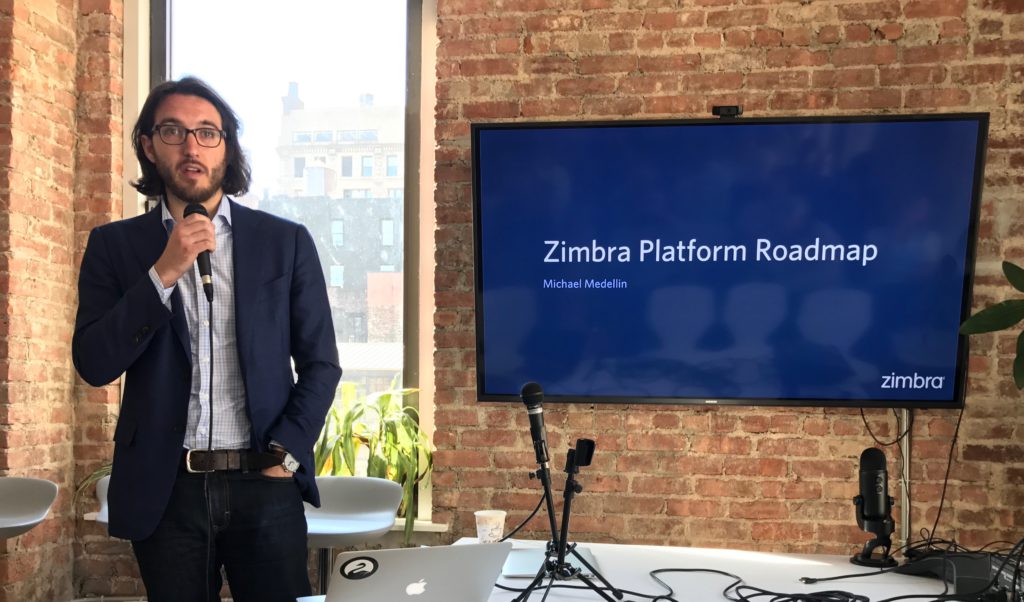
Michael Medellin presenting the roadmap for development of the Zimbra Platform (click to download his full presentation)
Jared Reimer’s presentation (click image to download)
Jared Reimer, CTO Cascadeo Corporation is working with Synacor to create a proof of concept implementation of the orchestration project. He’s working with the current Zimbra code base and plans to provide a solution that doesn’t rely on ‘always on’ or any other future code updates – i.e. it’s a solution we could implement fairly quickly. Jared gave a really fascinating presentation.
Florent Manens’ presentation (click image to download)
Florent Manens from Beezim, a Zimbra partner from France, showed us his Red Hat Ceph connector for Zimbra which allows ZCS to store blobs on a Ceph cluster. Pretty cool and sounds like it can really help reduce costs for service providers. I heard Erynn suggest to Florent that she could help make introductions to the Red Hat team – a small, but the important point as it shows commitment to share contacts and develop the open source community.
Zimbra Cloud ID presentation (click image to download)
John Kavanagh from Synacor presented about Zimbra Cloud ID – clearly something Synacor are using now on their consumer hosting platform for Single Sign On. It’s pretty cool with integration deep into iOS for seamless product upgrades using Zimbra mailbox creds. It isn’t clear to me how this exact implementation fit into more common use cases for ZCS, but it shows what’s possible.
Jeremy Mack presenting about GraphQL
Jennifer Goodwin presentation
Download the full presentation here
Jennifer Goodwin, who is Product Marketing Manager for Zimbra presented a new monitoring project which is currently in development.
Jennifer also looking for people to get involved / provide feedback
Zafar Khan’s presentation about his company’s encrypted email Zimlet integration
Zafar Khan from RPost talked about their Zimlet integration which exposes their freemium model to end users and looks like it will provide a seamless way for users to ‘self onboard’, pay for the service and subsequent revenues to percolate up the channel. An interesting model.
Solid Features and a predictable development and release cycle
In times past, the community has long been hoping for a predicable development and release cycle, along with solid, collaboration related features we really need. Here’s what came up during the event to cover this long standing wish.
Jorge de la Cruz’s product roadmap presentation (click image to download)
Jorge de la Cruz, Product manager presented a number of new features including a lovely looking UI.
Other points were:
- The dev team are committed to releases every 14 days. This has been happening for a while. I’m pretty sure it’s been painful to adopt, but I’m also sure that it will pay off in the long term. This show the commitment from all within the Zimbra team to make this happen.
- As mentioned earlier, the attendees of the bug bash event got a chance to influence product naming. Releases will be worded differently going forward. Quoting Tony Publiski, Zimbra’s build and release engineer: New “Early Release” will now come before Stable. This is for features that have been fully QA’d but need real-world burn-in before being considered Stable. New “Stable” will replace the former “GA” nomenclature. Additionally, potential future releases may make use of “Alpha” or “Beta” for functionality being introduced but that has not yet been fully QA’d for production use.
- Zimbra Desktop v7.3.0 – available now in Beta http://info.zimbra.com/try-zimbra-desktop-7.3.0
- New UI – demo available now http://info.zimbra.com/try-zimbra-universal-ui-public-cloud-beta. Shout out to Dino and Tim – the UX guys who designed it – lovely work guys.
- Web chat now part of Zimbra as a native deployment – available now as Early Release. Expected to be Stable in 8.8.0
- OwnCloud / Nextcloud integration available now as Early Release – expected to be Stable in 8.8.0
- My understanding is that 8.8.0 will include a lot of refactored code, making it a much ‘tighter’ release.
- S/MIME is also getting some attention in the very near future.
Partnerships
As we can see from the presentations, Synacor are working with outside companies to move things forward, including long standing partners who’ve developed great integrations. Although there was no presentation from Zextras on the day, it’s evident that they are working closely with the development and product teams at Zimbra and I think we’ll see interesting developments on that front over the following months. The excellent V Team idea to engage partners and the community. Erynn admitted to hanging out on the weekly Zeta Alliance calls. Inviting us to the office. Conducting the bug bash…
I see this willingness to engage partners and the community as a positive and encouraging development.
Zeta Alliance
Various members of the Zeta Alliance got a chance to meet up for drinks prior to the welcome party on the day of arrival. It was a great opportunity to put faces to names in an informal setting and to meet some of the members’ partners who had made it along to New York. I feel sure this will be the start of many in person meets to argument the existing weekly conference call and mailing lists. The Alliance welcomes new members – check out the Zeta Alliance website for more information about how to get involved.
Closing Thoughts
I left New York feeling excited about the future of ZCS.
Kudos to Himesh, Brent and all of the management team for thawing out their astronaut and to the entire team for pulling out all the stops to get it done. Now it’s up to us, the community, to get behind the project and help make it. Er… Fly!
Gallery
Here are a few pictures from the event
- Dinner with some of the gang
- Dinner with some of the gang
- Defining the new naming convention
- The bug bash in full swing – running through a demo of the new build process
- Panel discussion hosted by Sara Radicati from the Radicati Group
